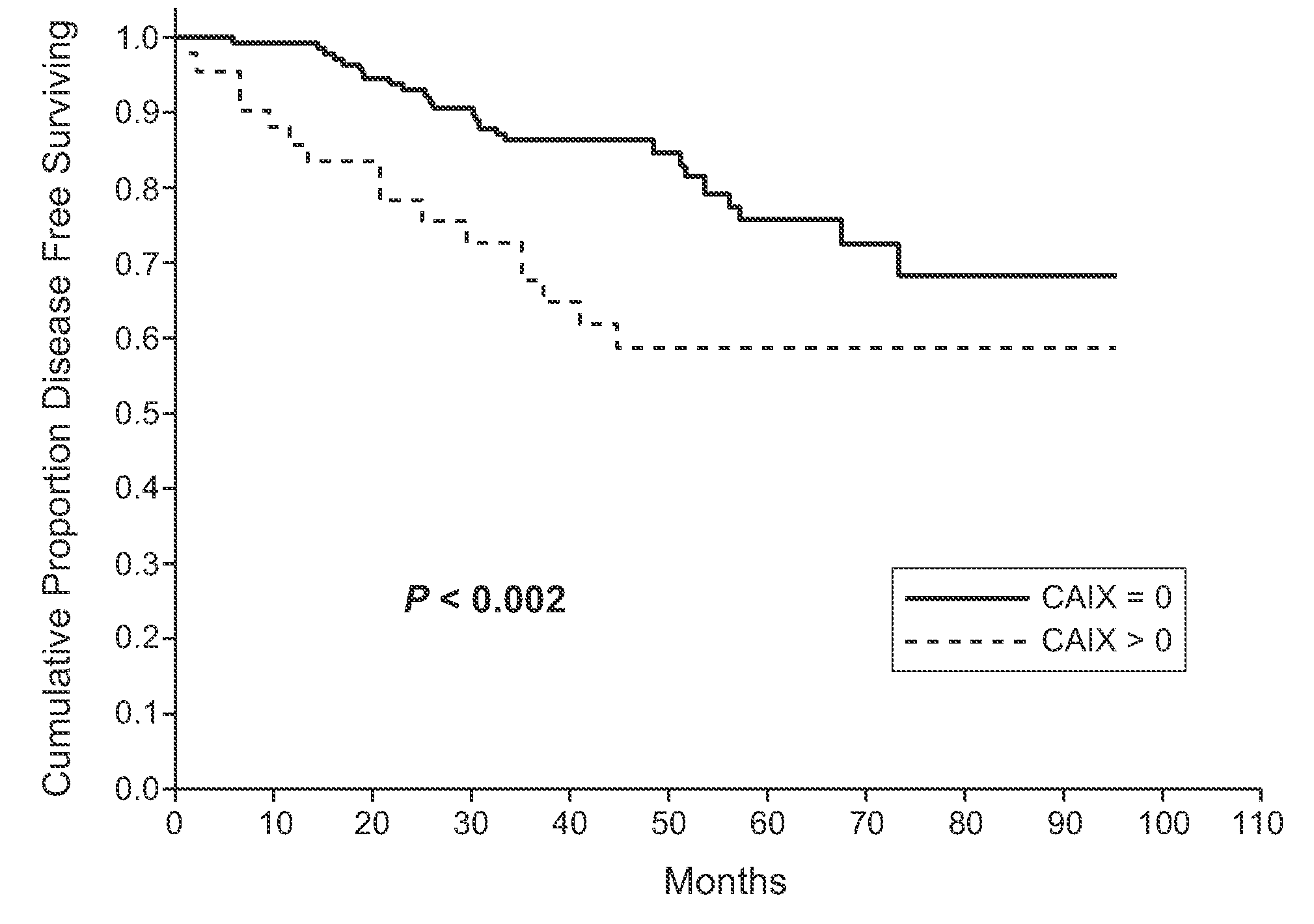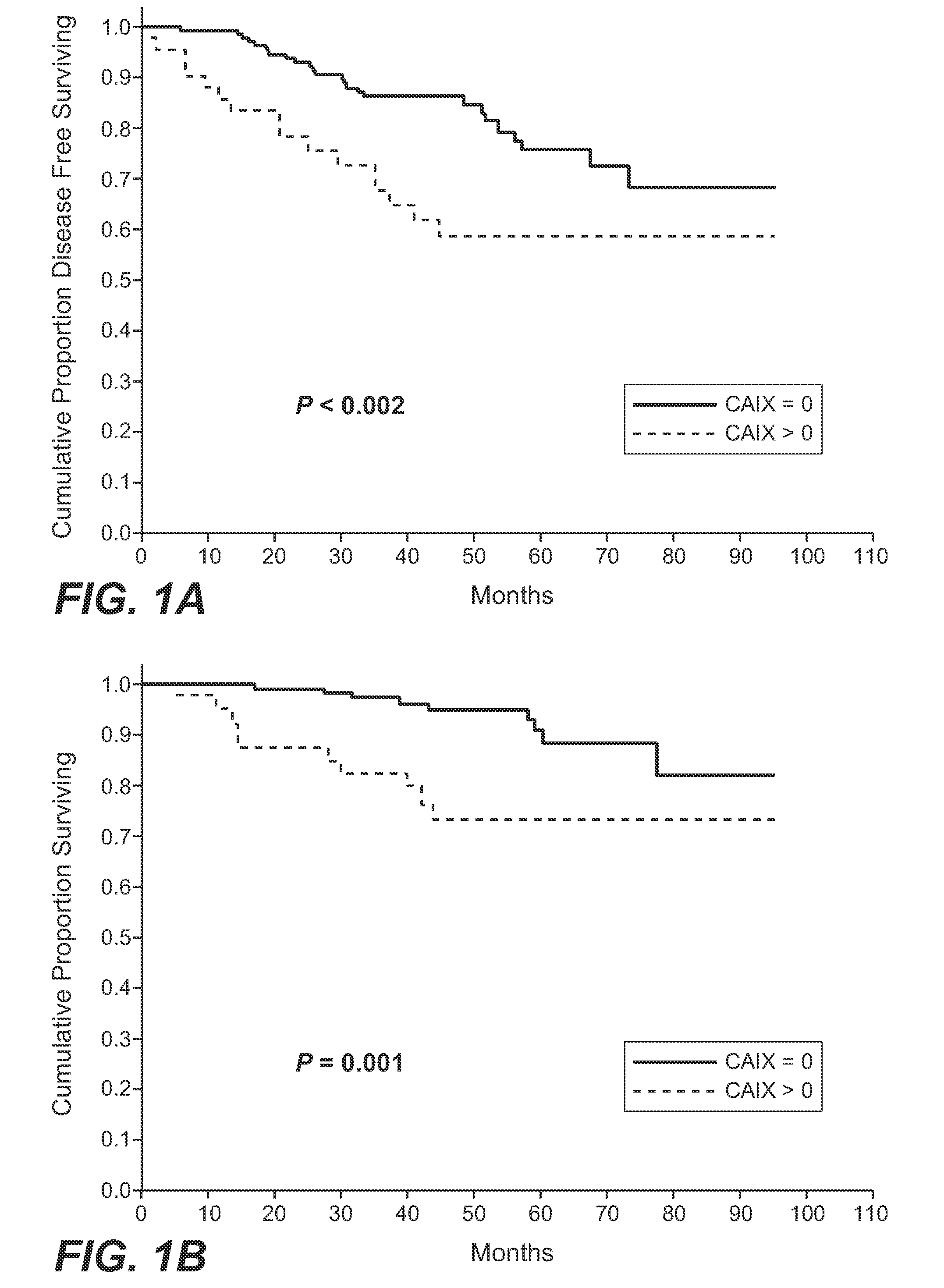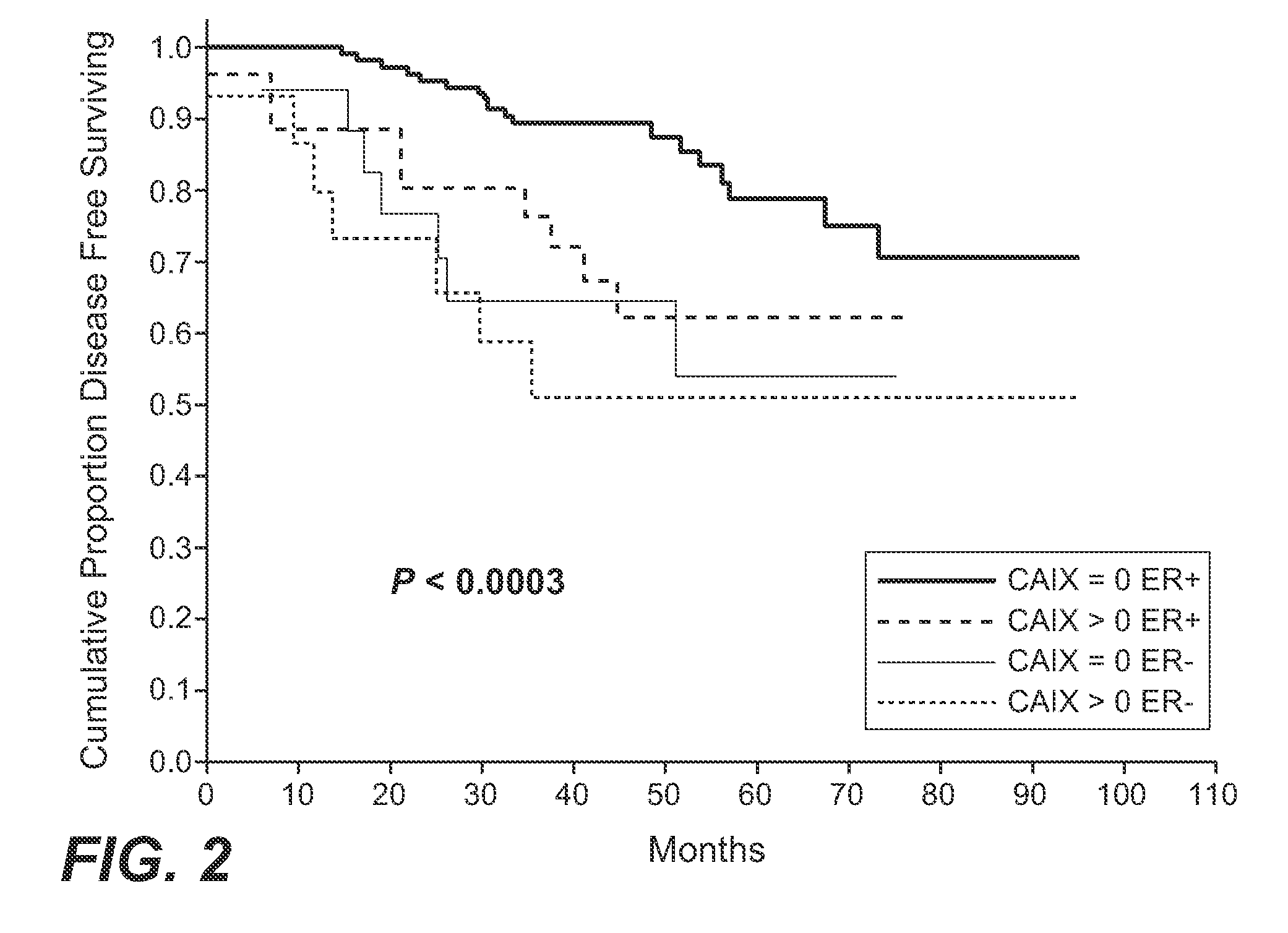MN/CA IX and Breast Cancer Therapy
a breast cancer and immunotherapy technology, applied in the field of medical genetics, can solve the problems of breast cancer patients with poor survival, breast cancer patients with hypoxia, and breast cancer cells are reduced under hypoxia, and achieve the effect of greater resistance to anti-estrogen
- Summary
- Abstract
- Description
- Claims
- Application Information
AI Technical Summary
Benefits of technology
Problems solved by technology
Method used
Image
Examples
example 1
Patient Characteristics and MN / CA IX Expression
[0176]The purpose of this study is to investigate the role of carbonic anhydrase IX (MN / CA IX) expression in predicting the response to epirubicin and disease-free survival (DFS) in breast cancer patients enrolled in a single institution trial of primary anthracycline and tamoxifen therapy. MN / CA IX expression was assessed in 183 patients with T2-4 N0-1 breast cancer enrolled in a randomized trial comparing four cycles of single agent epirubicin versus epirubicin+tamoxifen as primary systemic treatment. All patients received postoperatively four cycles of the four weekly i.v. cyclophosphamide, methotrexate, 5-fluorouracil regimen. Patients with estrogen receptor (ER)-positive primary tumors received 5 years of adjuvant tamoxifen. Pretreatment, p53 (P=0.007), c-erbB2 (P<0.01), and Ki67 (P=0.02) were directly associated with MN / CA IX expression, while bcl2 (P<0.000) and ER (P
[0177]=0.000) and progesterone receptor (PgR; P<0.01) were inver...
example 2
Relationship Between MN / CA IX Expression and Clinical and Immunohistochemical Prognostic Parameters
[0180]As shown in Table 2, MN / CA IX expression at baseline conditions did not correlate with T status and N status in univariate analysis. An association of borderline significance (0.08) between MN / CA IX intensity and grade was observed. MN / CA IX expression was directly associated with p53, c-erbB2, and Ki67 expression, while it was inversely associated with bcl2 and steroid hormone receptor status.
[0181]In multivariate analysis, however, the only two variables independently associated with MN / CA IX positivity were bcl2 expression, [odds ratio (OR) 0.2; 95% confidence interval (CI): 0.1-0.5, P=0.0001], and p53 expression [OR 2; 95% CI: 0.9-4.8, P=0.05].
TABLE 2Relationship between baseline MN / CA IX expressionand clinical and immunohistochemical parametersCA IX intensityUnivariate analysisGrading012P236 / 125(28.8%)7 / 20(35.0%)1 / 19(5.3%)389 / 125(71.2%)13 / 20(65.0%)18 / 19(94.7%)0.08*p5356 / 128(...
example 3
Effect of Treatment on MN / CA IX Immunostaining
[0182]In 126 patients with MN / CA IX assessed in matched samples before and after treatments, MN / CA IX positivity was found in 32 baseline tumor samples (25.4%) and 27 residual tumor samples to chemotherapy (21.4%), respectively. MN / CA IX-positive tumors (21 / 32) at the baseline showed reduction in marker expression (Table 3), and 18 of these became negative at the end of treatment, while MN / CA IX-negative tumors (13 / 94) at the baseline became positive at the end of treatment. MN / CA IX variation did not differ according to the treatment received (EPI or EPI-Tam; data not shown).
TABLE 3MN / CA IX individual changes and MN / CA IXexpression before and after treatmentOverallNo variationIncreaseDecreaseCA IX + ve3211 (34.4%) n.a.21 (65.6%)CA IX − ve9481 (86.2.%)13 (13.8%)n.a.
PUM
| Property | Measurement | Unit |
|---|---|---|
| Electrical resistance | aaaaa | aaaaa |
Abstract
Description
Claims
Application Information
 Login to View More
Login to View More - R&D
- Intellectual Property
- Life Sciences
- Materials
- Tech Scout
- Unparalleled Data Quality
- Higher Quality Content
- 60% Fewer Hallucinations
Browse by: Latest US Patents, China's latest patents, Technical Efficacy Thesaurus, Application Domain, Technology Topic, Popular Technical Reports.
© 2025 PatSnap. All rights reserved.Legal|Privacy policy|Modern Slavery Act Transparency Statement|Sitemap|About US| Contact US: help@patsnap.com



